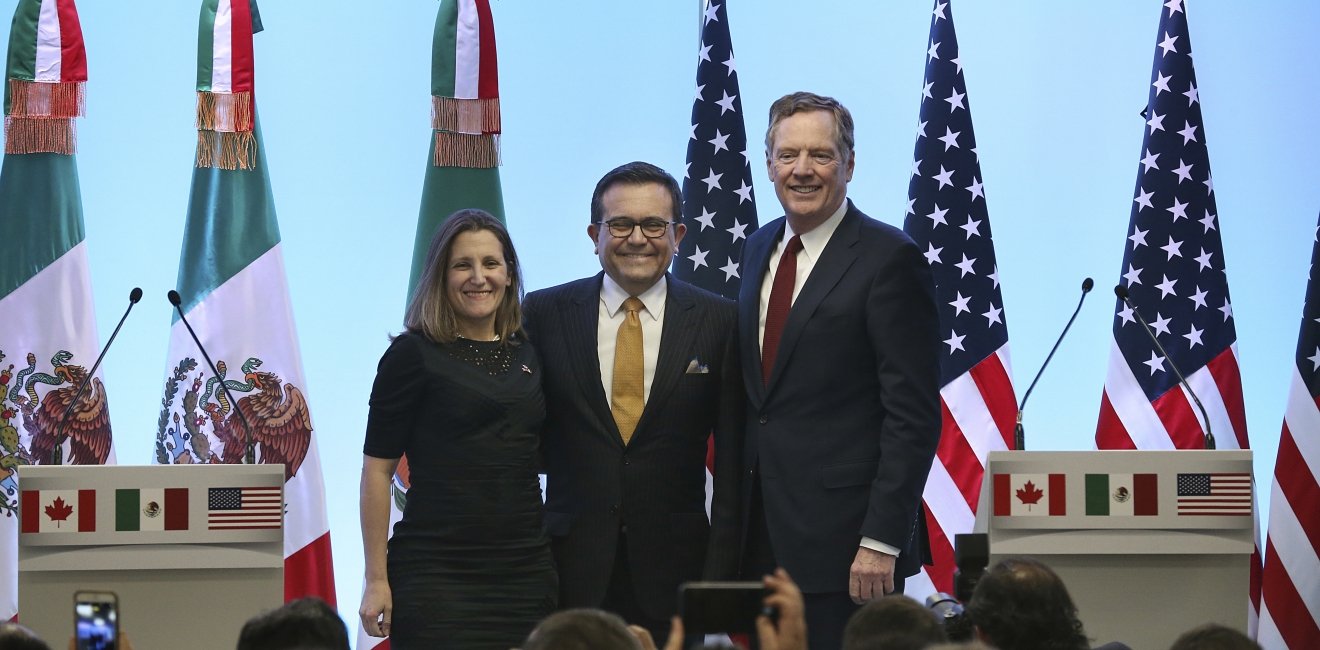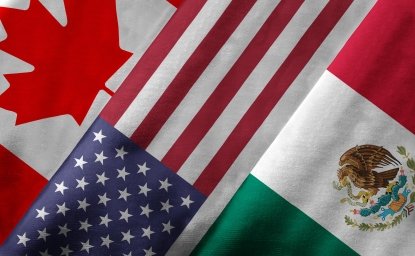NAFTA 2.0 End Game Briefer
From what we know so far, the prospective deal is not as good as we hoped, but it is not as bad as it could have been.
From what we know so far, the prospective deal is not as good as we hoped, but it is not as bad as it could have been.

I would give it a more than 50/50 chance. To be in the end game, two conditions must be met: Canada has to be able to live with the proposals worked out by the U.S. and Mexico over the past five weeks and there must be enough benefits across all sectors of the agreement to provide a landing strip for settlement.
The fact sheets do provide some directional arrows as to where the negotiations with Canada will be heading. For example, the threshold for duty-free treatment for low-value shipments across the border has been raised to $100 by Mexico. Canada has been holding out at $25.
Surprisingly, the fact sheets suggest that domestic supports in dairy, including supply management, would continue to be permissible as long as they are designed to have minimal trade distorting effects.
From what we know so far, the prospective deal is not as good as we hoped, but it is not as bad as it could have been.
It is important to remember that there are significant schisms between the White House and USTR on one side and Congress on the other, with farmers and business groups pushing back against the President’s most protectionist proposals. As soon as the U.S.-Mexico deal was announced Monday, business groups and members of Congress began to weigh in on the inadequacies of the deal, from insufficiencies in labor to under-developed intellectual property protections. It remains to be seen whether these interests coalesce into effective opposition to the USTR deal or whether these criticisms represent minority interests.
Perhaps but not right away. Since the first days of his presidency, Donald Trump has threatened to launch a six-month notice of withdrawal. He might still do that but there are a number of Congressional hurdles as well as legal challenges that stand in the way of a full withdrawal.
If USTR submits a Notice of Intent to Congress by August 31, followed by a full text on September 30, then a deal could be signed by the U.S. on November 29, but it could not be implemented until after about 105 days in the reporting and mark-up phase and then up to 90 days under congressional consideration. So, there is no possibility that a deal concluded this week would be considered by the current Congress. However, this would provide Mexico with a ‘signed’ deal before President Lopez Obrador takes the Oath of Office on December 1.
If Canada is not able to reach a deal with the other two Parties, the President has said he will submit the bilateral deal for consideration. However, Congress could refuse to consider a US-Mexico deal because Trade Promotion Authority was given only for a three-party deal. This would slow the process down by approximately 180 days as Congress considers whether to provide authorization for the two-party deal (too late to meet Mexico’s December 1 deadline).
Although Canada is not facing the same kind of political deadlines as the U.S. – with the Congressional midterms in November – and Mexico – with the transition to a new President – the prolonged NAFTA negotiations and the associated tariff wars have created uncertainty in the minds of investors and manufacturers and had a dampening effect on the Canadian economy. Ragging the puck (strategic delays) will only prolong that uncertainty.
Even though the USTR texts indicate that supply management might be maintained, President Trump has painted on a target on Canada’s Class 7 milk market and vowed to open it up to U.S. producers who, for a time, were able to export to Canada. This issue is indicative of the kind of visible, politically popular ‘wins’ that the President will need to show his supporters that he delivered a great deal. Movement on the Chapter 19 review process for anti-dumping and countervail decisions will be trickier. These mechanisms are seldom used any more – except for softwood lumber. And we are in the middle of a lumber dispute. Wiser legal minds suggest that there may be a way to introduce a review process that achieves similar results with fewer ruffled feathers, but I’ll leave that assessment to the lawyers. Government procurement continues to be a problem for Canada if the U.S. maintains its initial proposal, which would see Canada much worse off in future government contracting opportunities in the U.S. Perhaps with procurement, as well as with the TN visa/movement of people, maintaining the status quo is the best that Canada can hope for right now.
It is pretty clear now what concessions Canada will probably have to make and that the main elements of the U.S.-Mexico deal are tolerable if not optimal. Moreover, many of the areas of where consensus has already been reached, such as improved border clearance measures and benefits imported from the TPP on electronic commerce should be logged on the plus side of the ledger. If sufficient benefits can be cobbled together in areas not discussed in this week’s public briefings, then Canada might well find a pathway to a deal sooner rather than later.
Sources: Thanks to all of our wonky friends in the twitterverse, but especially @inumanak, @snlester, @lherman8, @JAHillman, and @chris_e_wilson.


The mission of the Wilson Center's Canada Institute is to raise the level of knowledge of Canada in the United States, particularly within the Washington, DC policy community. Research projects, initiatives, podcasts, and publications cover contemporary Canada, US-Canadian relations, North American political economy, and Canada's global role as it intersects with US national interests. Read more



